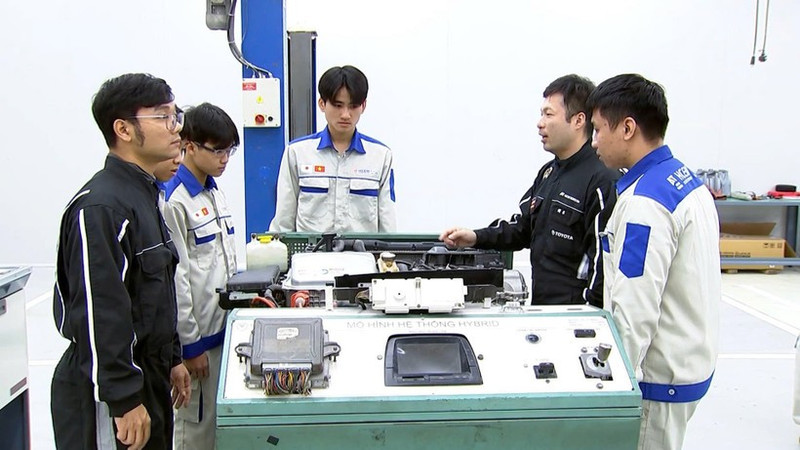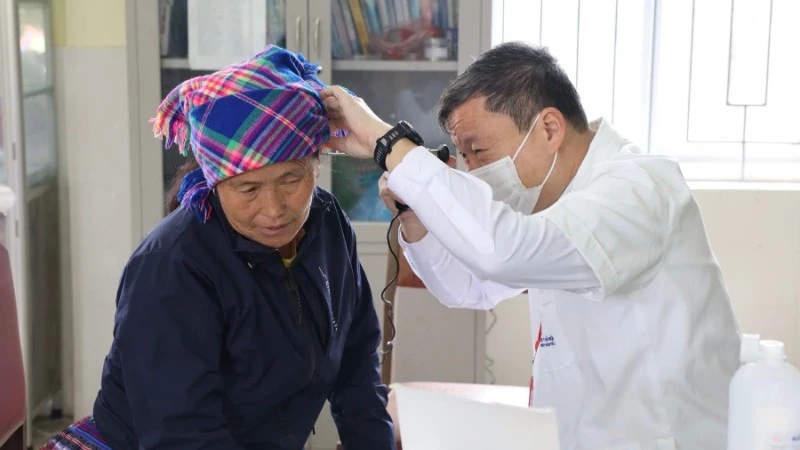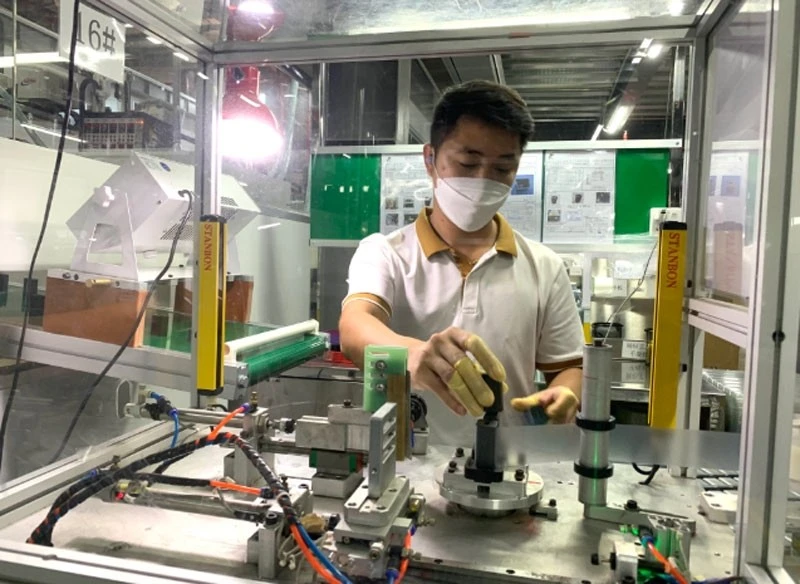For this reason, reforming vocational education is not only an urgent necessity but also a decisive factor in enabling the education system to respond in time to global labour market shifts.
Many but uneven
At present, there are nearly 1,900 vocational education and training (VET) institutions across the country, with more than 90% of graduates securing employment. In certain disciplines—such as mechatronics, automotive technology, food processing, and high-tech agriculture—employment rates are almost absolute. Yet this success has not spread widely. Phan Thi Le Thu of Vien Dong College remarked: “The status of VET will be hard to raise if society continues to hold a discriminatory mindset. We need to change perceptions of the position, role, and practical value of VET.”
Notably, career orientation is undergoing a clear shift. Fields such as engineering and technology, digital technology, logistics, renewable energy, and high-quality services are emerging as new spearheads. Digital transformation is no longer a choice but an inevitable requirement, prompting many training institutions to actively adopt AI, virtual reality, and digital platforms in teaching.
In parallel, strong moves are taking place in partnerships between training institutions and enterprises. The “dual training” model has gone beyond pilot projects. At Lilama 2 International Technology College, mechatronics students receive only 30% of their instruction in theory, with most of their practical training carried out directly in Bosch or GIZ workshops under the guidance of company engineers. In the north, Samsung has launched the “Samsung Talent Programme” at several vocational colleges, with many students recruited by the company straight from their internships.
International integration is also making marked progress. In Ho Chi Minh City, programmes in cooperation with enterprises from Japan and the Republic of Kora are training engineers in technology, food, and mechanics according to “skills standards” set directly by businesses. Truong Anh Dung, Director General of the Department of Vocational and Continuing Education (Ministry of Education and Training), observed: “International cooperation is no longer just about student exchanges, it now involves co-designing curricula, quality accreditation, and mutual recognition of qualifications.”
Behind this richness, however, lies an uneven picture. High-quality vocational schools are largely concentrated in major urban centres, while many local institutions operate at a minimal level, with duplicated disciplines, insufficient investment, and little ability to attract students. Despite increased budgets from central and local governments, many institutions still lack equipment and workshops, with degraded infrastructure. Non-public VET institutions struggle to access land to expand training, with not a few forced to rent just to maintain operations.
The VET system still leans heavily towards short-term training, lacking momentum from high-tech disciplines, substantive links with enterprises, and social trust.
Between 2017 and 2023, over 180 public institutions were merged or dissolved under restructuring plans. While the system has become leaner, its effectiveness remains questionable. According to Deputy Director of the Department of Vocational and Continuing Education Pham Vu Quoc Binh by the end of 2024 the country had 1,886 VET institutions, enrolling more than 2.43 million learners, surpassing 100% of the target. However, more than 70% of learners enrolled in elementary-level short courses with low entry requirements, while intermediate and college levels—supposed to be the backbone of systematic vocational training—accounted for only around 29%.
A breakthrough opportunity
Vocational education now stands at the threshold of a major transformation. Never before has the legal framework for VET advanced as vigorously as it has in this period. Directive No. 21-CT/TW, issued by the Party Secretariat on May 4, 2023, identifies vocational education development as a breakthrough solution to improve workforce quality, especially skilled labour, to meet socio-economic development and international integration requirements.
The Directive sets comprehensive requirements for VET: completing legislation in an open, interconnected manner responsive to the labour market; popularising vocational training for youth, workers, and farmers; restructuring the vocational school network; modernising curricula, content, and teaching methods; and strengthening links between the state, schools, and enterprises. Budgets for VET must be raised in proportion to its role in providing high-quality human resources, particularly in key sectors.
The draft amended Law on Vocational Education, expected to be submitted to the National Assembly at the end of 2025, is anticipated to institutionalise these directions. The draft emphasises decentralisation, greater autonomy for training institutions, expanded international cooperation, and improved financial mechanisms. Enterprises are encouraged to participate fully in training—from programme design to teaching, investment, and recruitment. The ultimate aim is to build a modern, transparent vocational education system adaptable to rapid labour market fluctuations.
One groundbreaking feature of the draft law is the Secondary vocational school programme—an integrated model combining general education with vocational skills training for students after lower secondary school. Students will study both general subjects and vocational training at a VET institution, receiving an upper secondary-equivalent diploma after three years. They can then either enter the workforce or continue their studies without having to repeat general education, saving time and costs while creating a more flexible learning pathway and addressing shortcomings in current intermediate-level training.
Colleges and intermediate schools meeting conditions will implement the programme, guaranteeing dual outcomes: general education and intermediate-level vocational skills. This model is particularly suited to students in remote areas, where demand for vocational training is high but access remains limited.
Alongside the Secondary vocational school model, modernising vocational institutions towards technology, practice, and creativity is another key pillar. This requires not only upgrading infrastructure but also changing the operating model: co-designing curricula with enterprises, inviting industry experts to teach, and co-owning training modules to ensure content remains market-driven. International cooperation should also be deepened—from teacher and student exchanges to developing globally benchmarked programmes.
According to many experts, unifying VET under a single management authority—the Ministry of Education and Training—is a rational step towards system coherence. With the Ministry overseeing both general and vocational education, direction will be more consistent and implementation less fragmented. Yet mechanisms alone are not enough. An effective training system must be underpinned by social trust, which starts with communication and career counselling. Truong Anh Dung emphasised: “Enterprises need to be involved in career counselling so that students can see a clear career pathway.”
When designed properly, operated flexibly, and closely connected to the labour market, vocational education has every potential to break through, becoming a new driver of growth and a cornerstone of national development aspirations in the new era.
















